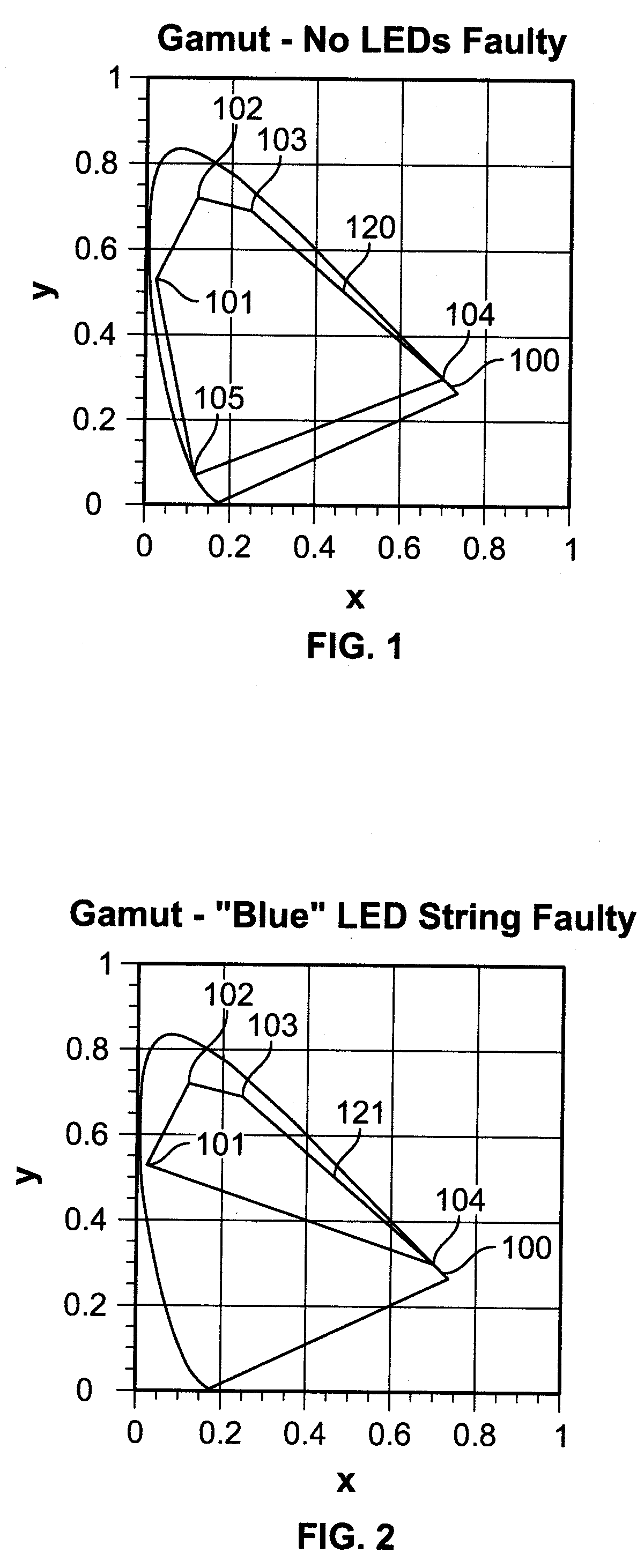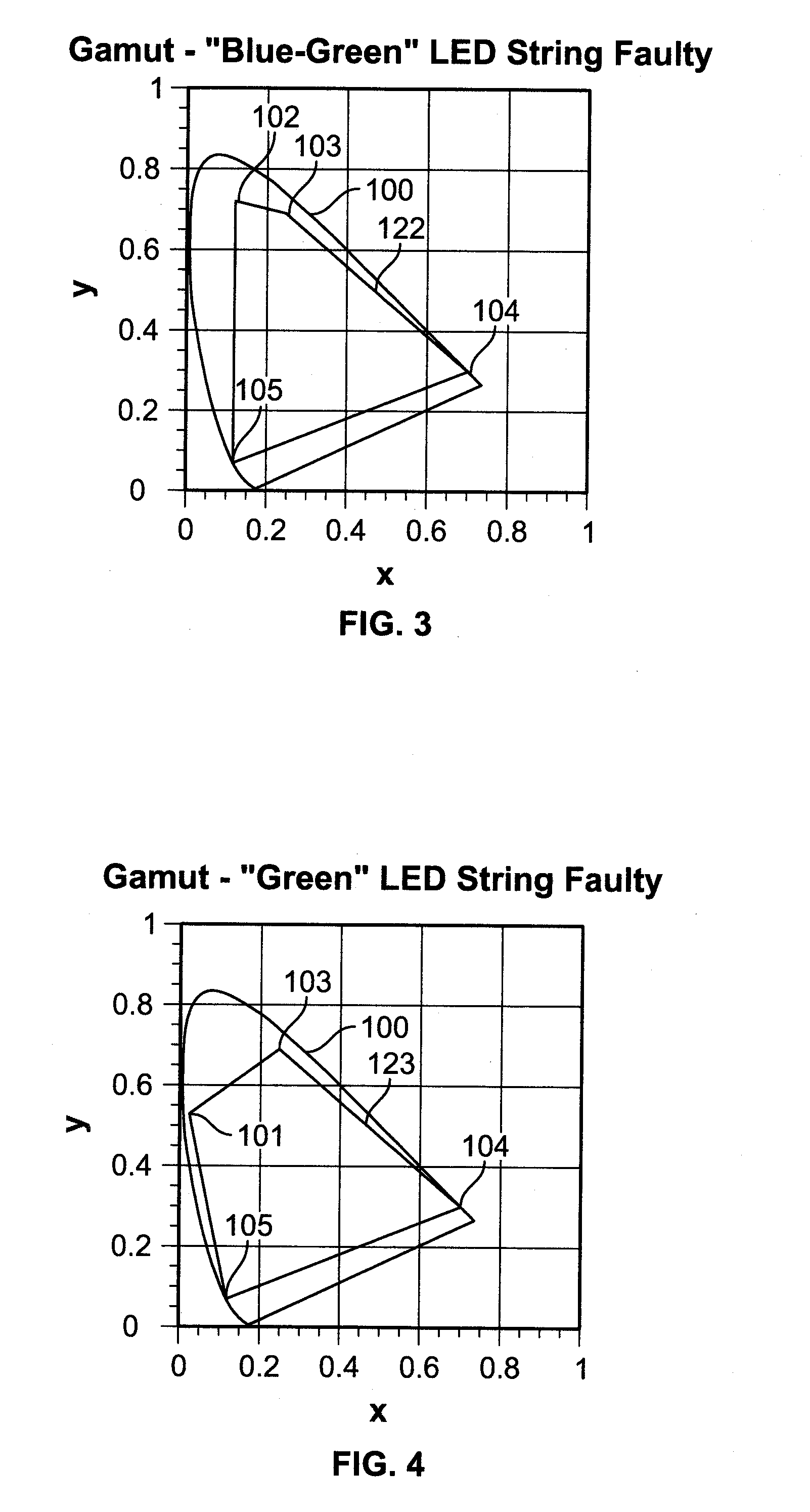Method for computing drive currents for a plurality of leds in a pixel of a signboard to achieve a desired color at a desired luminous intensity
a technology of leds and leds, applied in the direction of cathode-ray tube indicators, static indicating devices, instruments, etc., can solve the problems of large number of connectors, insensitive human psycho-visual system to light intensity changes, and face exposure to significant heat loads
- Summary
- Abstract
- Description
- Claims
- Application Information
AI Technical Summary
Benefits of technology
Problems solved by technology
Method used
Image
Examples
Embodiment Construction
[0026]According to one embodiment of the present invention, a fault in an LED or the wiring in a pixel may be circumvented. When a fault in either an LED or in the wiring is detected and located, the intensities of other LEDs in a pixel may be dynamically altered, so that the pixel can continue to function based on other functional LEDs in the pixel, despite the fault and until repair is performed. Under this arrangement, the pixel may function with little or no noticeable difference from the input (original) tristimulus value for the pixel. In this embodiment, each pixel may have 3 or more different kinds of LED, with each LED providing light contributing to providing the color specified by the input (original) tristimulus value for the pixel coordinate (xi, yi). (The present detailed description follows the color coordinate convention of G. Wyszecki and W. Stiles, Color Science: Concepts and Methods, Quantitative Data and Formulae, 2nd Edition, John Wiley & Sons, Inc., New York (1...
PUM
 Login to View More
Login to View More Abstract
Description
Claims
Application Information
 Login to View More
Login to View More - R&D
- Intellectual Property
- Life Sciences
- Materials
- Tech Scout
- Unparalleled Data Quality
- Higher Quality Content
- 60% Fewer Hallucinations
Browse by: Latest US Patents, China's latest patents, Technical Efficacy Thesaurus, Application Domain, Technology Topic, Popular Technical Reports.
© 2025 PatSnap. All rights reserved.Legal|Privacy policy|Modern Slavery Act Transparency Statement|Sitemap|About US| Contact US: help@patsnap.com



